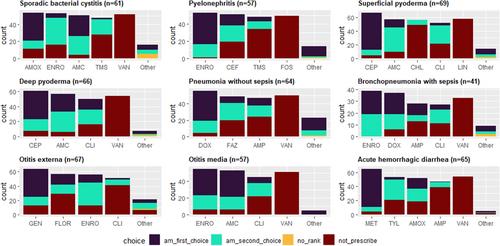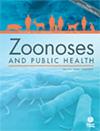Assessing Illinois companion animal veterinarians' antimicrobial prescription practices and the factors that influence their decisions when treating bacterial infections in dogs and cats
Abstract
Aims
Judicious antimicrobial use in companion animal practice is critical for maintaining the effectiveness of antimicrobial agents against bacterial infections and reducing the selection of antimicrobial-resistant bacteria. This study aimed to provide insights into companion animal veterinarians' antimicrobial treatment recommendations for common bacterial infections in dogs and cats and describe the factors influencing their prescription choices.
Methods and Results
An online survey using QualtricsXM® software was administered between September and November 2022 to companion animal veterinarians who were Illinois State Veterinary Medical Association members. Descriptive and text analyses were conducted to assess the participants' responses. A total of 78 surveys were included in the analysis. Skin infections were ranked as the most common bacterial infections for which veterinarians prescribed antimicrobial agents, followed by ear, urinary tract, respiratory, and enteric infections. The severity of clinical symptoms and the results of bacterial culture and susceptibility tests were the most influential factors for veterinarians when making antimicrobial prescription choices. Veterinarians were aware of the current antimicrobial prescription guideline recommendations when prescribing antimicrobials empirically to nine hypothetical scenarios of bacterial infections. According to the results of the text analysis that assessed veterinarians' responses to an open-ended question, regarding their challenges when prescribing antimicrobial agents, the pairwise correlation of word frequencies within each response showed the highest correlations between the words ‘owner’ and ‘compliance’, ‘administration’ and ‘route’, ‘cost’ and ‘culture’, and ‘patients’ and ‘acceptance’.
Conclusions
The study results can support animal health stakeholders in the development of antimicrobial stewardship programmes to promote appropriate antimicrobial use and limit the emergence of antimicrobial resistance.


 求助内容:
求助内容: 应助结果提醒方式:
应助结果提醒方式:


